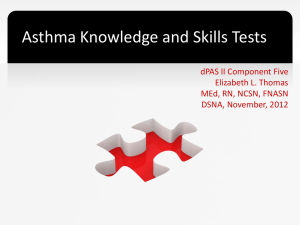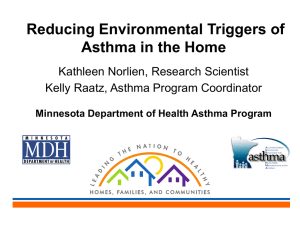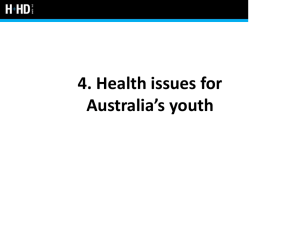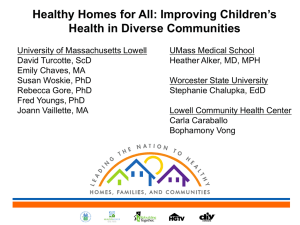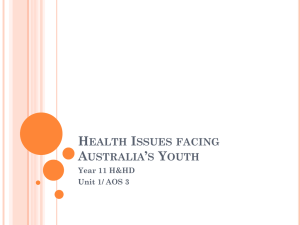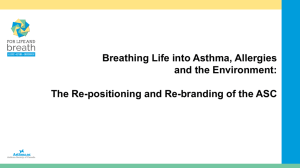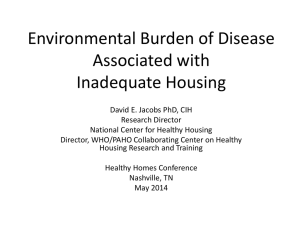Research Poster - Clean Air Council
advertisement
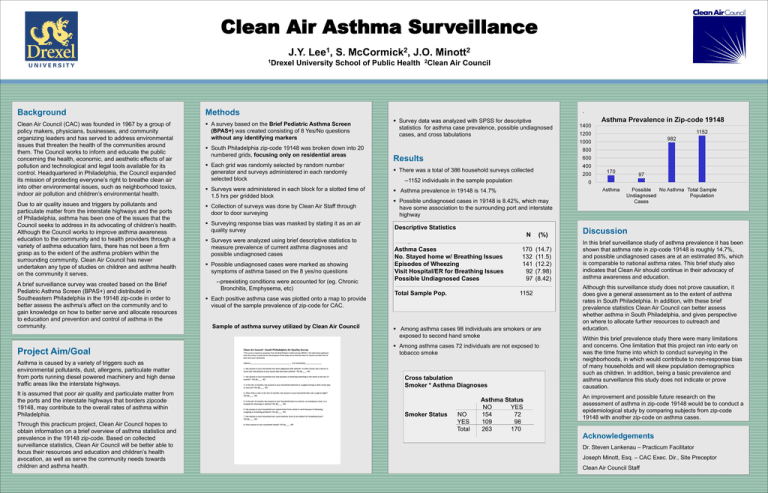
Clean Air Asthma Surveillance J.Y. 1Drexel Background Clean Air Council (CAC) was founded in 1967 by a group of policy makers, physicians, businesses, and community organizing leaders and has served to address environmental issues that threaten the health of the communities around them. The Council works to inform and educate the public concerning the health, economic, and aesthetic effects of air pollution and technological and legal tools available for its control. Headquartered in Philadelphia, the Council expanded its mission of protecting everyone’s right to breathe clean air into other environmental issues, such as neighborhood toxics, indoor air pollution and children’s environmental health. Due to air quality issues and triggers by pollutants and particulate matter from the interstate highways and the ports of Philadelphia, asthma has been one of the issues that the Council seeks to address in its advocating of children’s health. Although the Council works to improve asthma awareness education to the community and to health providers through a variety of asthma education fairs, there has not been a firm grasp as to the extent of the asthma problem within the surrounding community. Clean Air Council has never undertaken any type of studies on children and asthma health on the community it serves. A brief surveillance survey was created based on the Brief Pediatric Asthma Screen (BPAS+) and distributed in Southeastern Philadelphia in the 19148 zip-code in order to better assess the asthma’s affect on the community and to gain knowledge on how to better serve and allocate resources to education and prevention and control of asthma in the community. Project Aim/Goal Asthma is caused by a variety of triggers such as environmental pollutants, dust, allergens, particulate matter from ports running diesel powered machinery and high dense traffic areas like the interstate highways. It is assumed that poor air quality and particulate matter from the ports and the interstate highways that borders zipcode 19148, may contribute to the overall rates of asthma within Philadelphia. Through this practicum project, Clean Air Council hopes to obtain information on a brief overview of asthma statistics and prevalence in the 19148 zip-code. Based on collected surveillance statistics, Clean Air Council will be better able to focus their resources and education and children’s health avocation, as well as serve the community needs towards children and asthma health. 1 Lee , S. 2 McCormick , J.O. 2 Minott University School of Public Health 2Clean Air Council . Methods A survey based on the Brief Pediatric Asthma Screen (BPAS+) was created consisting of 8 Yes/No questions without any identifying markers South Philadelphia zip-code 19148 was broken down into 20 numbered grids, focusing only on residential areas Each grid was randomly selected by random number generator and surveys administered in each randomly selected block Surveys were administered in each block for a slotted time of 1.5 hrs per gridded block Survey data was analyzed with SPSS for descriptive statistics for asthma case prevalence, possible undiagnosed cases, and cross tabulations Results There was a total of 386 household surveys collected --1152 individuals in the sample population Asthma prevalence in 19148 is 14.7% Collection of surveys was done by Clean Air Staff through door to door surveying Possible undiagnosed cases in 19148 is 8.42%, which may have some association to the surrounding port and interstate highway Surveying response bias was masked by stating it as an air quality survey Descriptive Statistics Surveys were analyzed using brief descriptive statistics to measure prevalence of current asthma diagnoses and possible undiagnosed cases Possible undiagnosed cases were marked as showing symptoms of asthma based on the 8 yes/no questions --preexisting conditions were accounted for (eg. Chronic Bronchitis, Emphysema, etc) Each positive asthma case was plotted onto a map to provide visual of the sample prevalence of zip-code for CAC. Sample of asthma survey utilized by Clean Air Council N . Asthma Cases No. Stayed home w/ Breathing Issues Episodes of Wheezing Visit Hospital/ER for Breathing Issues Possible Undiagnosed Cases Total Sample Pop. 170 132 141 92 97 (%) (14.7) (11.5) (12.2) (7.98) (8.42) 1152 Among asthma cases 98 individuals are smokers or are exposed to second hand smoke Among asthma cases 72 individuals are not exposed to tobacco smoke Cross tabulation Smoker * Asthma Diagnoses Smoker Status NO YES Total Asthma Status NO YES 154 72 109 98 263 170 Discussion In this brief surveillance study of asthma prevalence it has been shown that asthma rate in zip-code 19148 is roughly 14.7%, and possible undiagnosed cases are at an estimated 8%, which is comparable to national asthma rates. This brief study also indicates that Clean Air should continue in their advocacy of asthma awareness and education. Although this surveillance study does not prove causation, it does give a general assessment as to the extent of asthma rates in South Philadelphia. In addition, with these brief prevalence statistics Clean Air Council can better assess whether asthma in South Philadelphia, and gives perspective on where to allocate further resources to outreach and education. Within this brief prevalence study there were many limitations and concerns. One limitation that this project ran into early on was the time frame into which to conduct surveying in the neighborhoods, in which would contribute to non-response bias of many households and will skew population demographics such as children. In addition, being a basic prevalence and asthma surveillance this study does not indicate or prove causation. An improvement and possible future research on the assessment of asthma in zip-code 19148 would be to conduct a epidemiological study by comparing subjects from zip-code 19148 with another zip-code on asthma cases. Acknowledgements Dr. Steven Lankenau – Practicum Facilitator Joseph Minott, Esq. – CAC Exec. Dir., Site Preceptor Clean Air Council Staff

